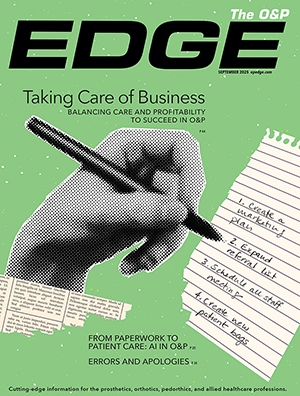During my prosthetics residency a colleague described an interaction with a patient who was frustrated after experiencing ongoing discomfort despite multiple adjustments to his prosthesis. The patient expressed confusion about how it was possible to put a man on the moon but not make a comfortable socket.
The clinician responded that unlike prosthetics, space flight involves a lot of math.
Support authors and subscribe to content
This is premium stuff. Subscribe to read the entire article.
Login if you have purchased




